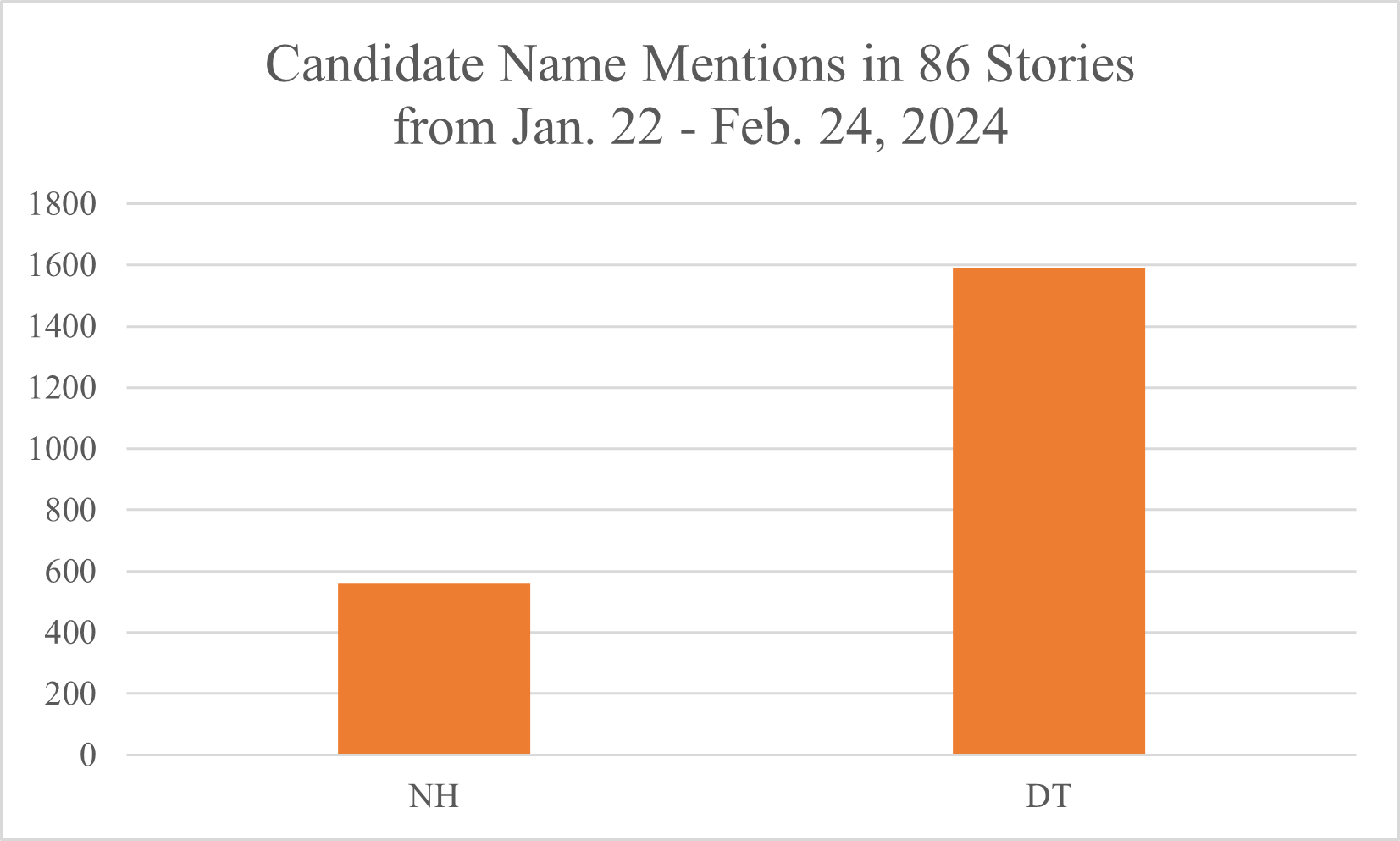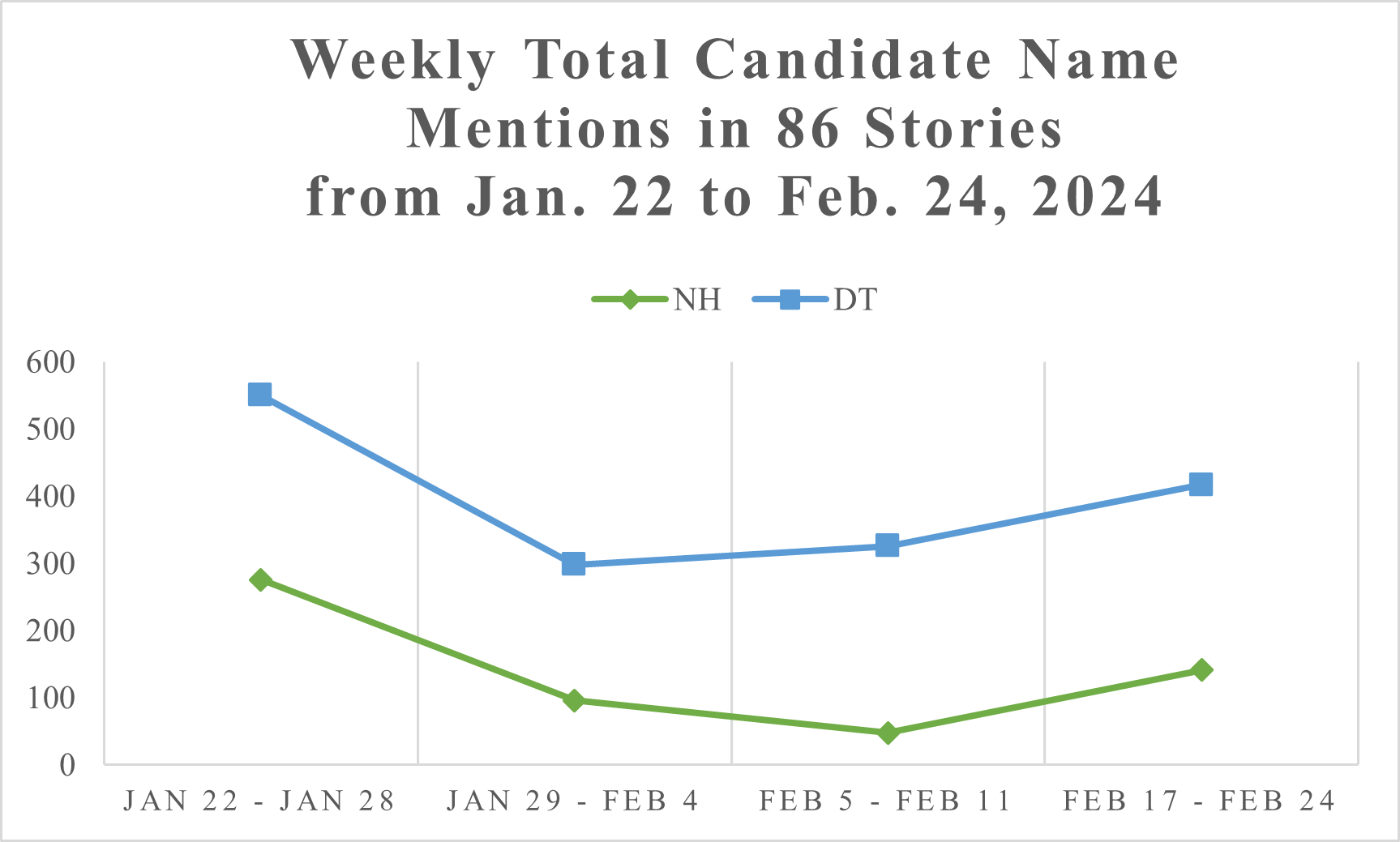Disproportionate News: Name Mentions of Presidential Candidates During Early Primaries
Photo by Pixabay
Revised and condensed on 3/7. To view the original version of this article, click here.
From the day before the New Hampshire primaries through the day of the South Carolina primaries (Jan. 22 – Feb. 24), CivicStory conducted an informal survey of election news. Our aim was to find out if the amount of attention given to presidential candidates Haley and Trump was reasonably equitable.
Our basic metric was the number of “name mentions” in 86 stories and headlines in The New York Times, a paper of record and news agenda-setter with extensive political reporting. We counted only election-related news. We did not count ongoing reports of candidate Trump’s legal or court-case issues unless the 2024 elections were specifically referenced.
Across the month, we saw a preponderance of name mentions of one candidate over the other. On average, candidate Trump’s name appeared three times (50 percentage points) more frequently than candidate Haley’s. During the week of Feb. 5–11, the disparity was extreme, with Trump named seven times more frequently than Haley.
Total Name Mentions, Jan. 22 to Feb. 24
The charts below show the number and percentages of name mentions from Jan. 22 to Feb. 24, from the day before the New Hampshire primary to the day of the South Carolina primary.*
Ex. 1
Ex. 2
*Our data did not include news stories from Mon., Feb. 12 to Fri., Feb. 16. During that five-day period, extensive news about court decisions and world affairs subsumed election reporting. Our story tracking resumed on Sat., Feb. 17.
Weekly Trends
The line graph below shows weekly trends over the month from Jan. 22 to Feb. 24.
Ex. 3
Notable disparities prevail in all four tracking periods. In the third week, which included the Nevada primary and caucus, candidate Trump’s mentions increased to 298, while candidate Haley’s decreased to 48.
Story Sources and Data
We reviewed 86 election-related stories published in 29 print editions. We grouped these stories into four tracking periods: Jan. 22-28 (26 stories), Jan. 29-Feb. 4 (20 stories), and Feb. 5-11 (20 stories), and Feb. 17-24 (20 stories).
Methodology
Specifically, we counted last names appearing in the body of each news story. The counts included hyphenated terms and contrived words such as “Trumper.” We did not count ongoing reports of candidate Trump’s legal or court-case issues unless the 2024 elections were referenced. In general, we did not track opinion pieces or editorials, with a few exceptions noted in the data. We also did not count editorial subheadings or photo captions, descriptions of candidates (“former governor,” “former president”), names of family members, or secondary headlines.
Addressing Inequities
Assuming that a more proportionate number of candidate name mentions is desirable, both to engage voters and to avoid a sense of voter futility, we suggest some ways that editors can address habitual disparities.
Emphasize information about candidates’ leadership qualities, qualifications, and experience relevant to the office.
Avoid over-personalization and repetition, and use titles to increase public awareness of candidates’ past roles.
Affirm essential civics concepts such as “citizens retain ultimate authority” and provide historical context for the non-constitutional, practical role of political parties.
Questions we’re considering:
Are excessively high name counts a matter of reporting style and mannerisms, or are they intentional?
Might gender, age, or racial factors or stereotypes contribute to name mention inequities?
Does the habit of sports and gaming metaphors (“match-up,” “favorite,” “finding a lane,” “battling,” “fighting,” “trouncing,” etc.) contribute to disproportionality?
We look forward to further discussion.
Please see previous blog posts for additional analysis and graphs.
“Ensuring Citizens in Every Primary Have Their Say” (Feb. 22)
“How Many Mentions Are Too Many?” (Feb. 15)
For an earlier tracking period when there were six Republican candidates (Jan 2-12), click below.




